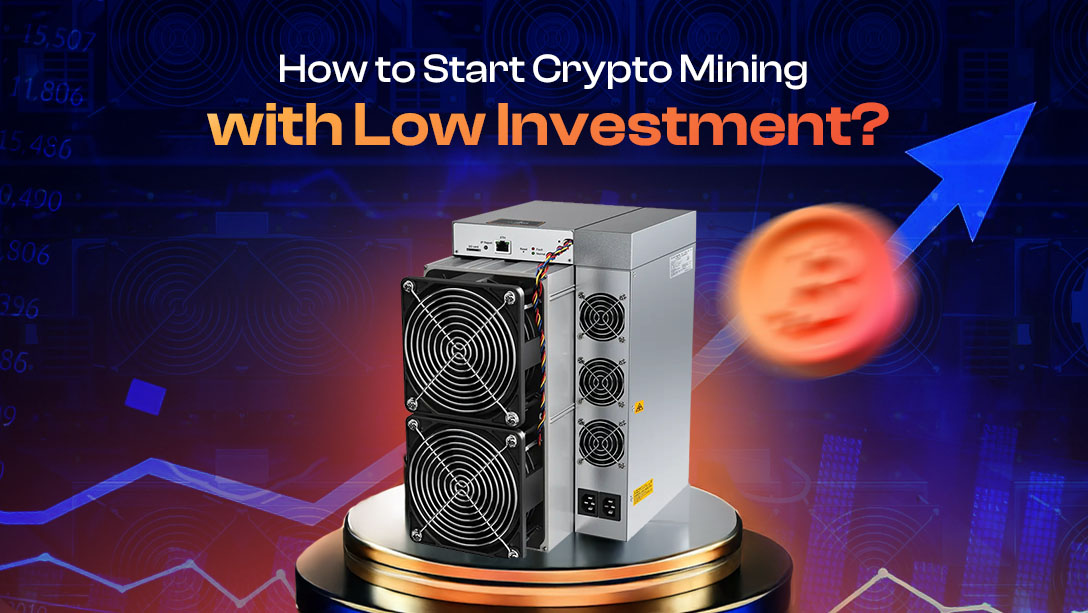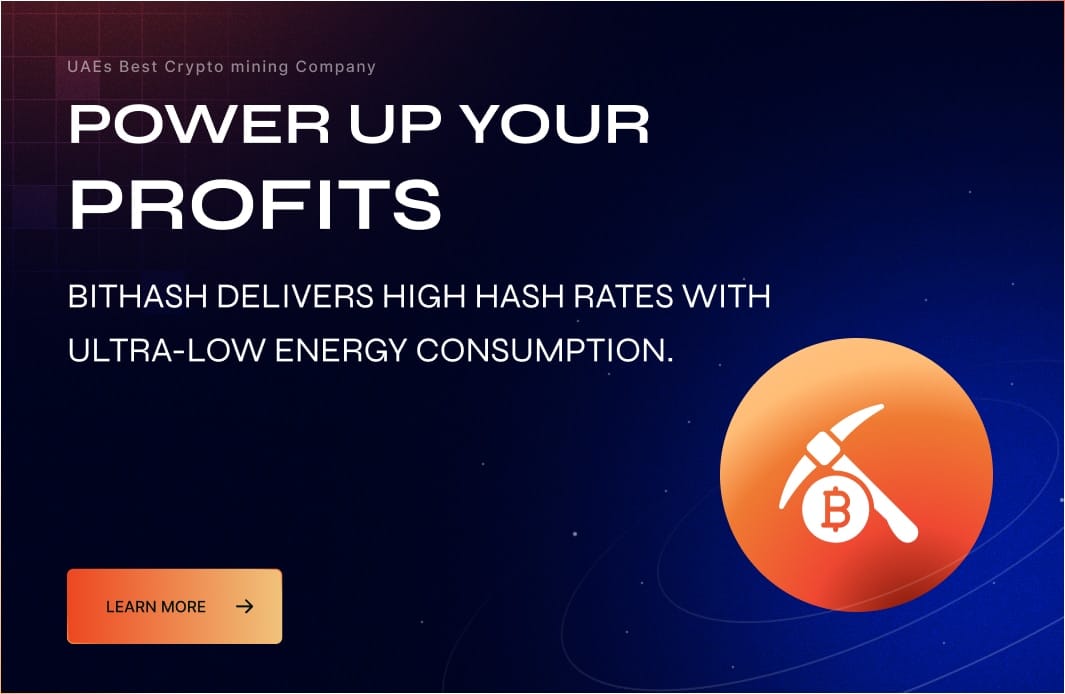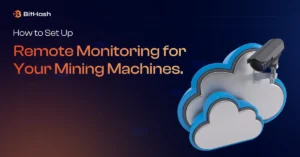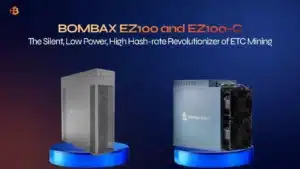Crypto mining with low investment is becoming more popular as people look for ways to earn cryptocurrency without spending a lot of money. In simple terms, cryptocurrency mining means using your computer to help confirm transactions on a blockchain network. In return, you can earn digital coins like Bitcoin. While Bitcoin mining usually needs expensive equipment and high electricity costs, there are other ways to start crypto mining cheaply, especially for beginners.
Not every type of cryptocurrency requires heavy power or a big budget. Some methods allow you to mine crypto at home at a low cost or even use your phone or an old PC. This makes beginner crypto mining setups more accessible than ever before. However, understanding how it works and choosing the right method is very important.
In this article, we’ll explain how crypto mining works, the tools you need, and how to get started step-by-step — all while keeping the focus on low-budget crypto mining and practical tips for beginners.
Step 1: Get a Bitcoin Wallet
Before you begin mining, you need a Bitcoin wallet. This is where you’ll safely store the bitcoins you earn. There are two main types of wallets: hot wallets, which are connected to the internet and easy to access, and cold wallets, which are offline and more secure. For beginners, a trusted mobile or desktop wallet is a good place to start. If you plan to store large amounts, consider switching to a hardware wallet later.
Having a wallet is important because it gives you a safe place to receive mining rewards and manage your funds.
Step 2: Select Your Mining Hardware
To start Bitcoin mining, you need the right hardware. Unlike some other coins, Bitcoin mining cannot be done with a normal computer. It requires ASICs (Application-Specific Integrated Circuits) — special devices made just for mining. These machines are fast and efficient but can be expensive.
If you are interested in crypto mining with low investment, it may be better to look at coins that can be mined with a GPU or CPU instead of Bitcoin or start with budget crypto mining methods like cloud mining or shared rigs.
Step 3: Choose a Mining Pool
Mining crypto alone is very difficult, especially on large networks like Bitcoin. That’s why many people join a mining pool — a group of miners who combine their power and share the rewards. When the pool solves a block, the reward is divided among all members based on their contribution.
Look for a Bitcoin mining pool that has low fees, a good reputation, and a solid payout structure. Joining a pool improves your chances of receiving consistent payouts, particularly if you’re beginning with low-budget cryptocurrency mining equipment.
Step 4: Download Mining Software
After you’ve chosen your hardware and pool, you’re to install Bitcoin mining software. This software connects your device to the blockchain, where you’ve entered the mining pool. It also helps your hardware do the work of solving block problems.
There are many free and paid options available. Make sure to choose software that supports your mining hardware and works well with your operating system. This is a key step for anyone trying to start crypto mining cheaply and keep things simple.
Step 5: Configure Your Mining Software
After downloading your mining tool, it’s time to set it up. You must provide a few details, such as the address of the mining pool, your wallet information, and some basic settings. Don’t worry; most mining pools come with detailed instructions to make sure everything is connected properly.
For anyone who is not familiar with it, this could appear a little technical at first. Fortunately, most mining software is simple to use and includes basic instructions. Try choosing one with a user-friendly interface and strong assistance to make sure your cryptocurrency mining setup functions as smoothly as possible.
Step 6: Start Mining
With everything ready, you can now start mining crypto. Your mining software will begin solving complex equations, verifying its transactions, and contributing to the Bitcoin network. If your pool wins the reward, you’ll earn a share of the Bitcoin mined.
Even though Bitcoin mining is competitive, joining a mining pool increases your chances. If you’re trying to earn crypto with little money, this is a smart way to stay involved without huge risk.
Step 7: Monitor Your Mining Activity
You should keep an eye on your mining once you’re operational. Check for overheating in your hardware, verify your electricity consumption, and monitor your mining program to make sure everything is operating as it should. Maintaining your system helps extend its lifespan, especially since mining is a 24/7 activity.
Also, don’t forget to check your mining pool dashboard regularly. It’ll show you how much you’ve earned, your hash rate, and when you’ll get paid — all useful info to stay on track. For those focused on profitable crypto mining under $100 or running low cost crypto mining setups, monitoring helps you avoid losses and keep things efficient.
By following these steps, anyone can begin their journey into cryptocurrency mining with low investment. While mining Bitcoin does need powerful hardware, beginners can still explore affordable mining rigs or other cheap mining methods to gain experience and earn some crypto rewards over time.
How Proof-of-Work Mining Works
Proof-of-Work (PoW) is the method blockchains like Bitcoin and Litecoin use to verify transactions. Miners use powerful computers to solve complex problems in this system. The first to solve it earns a reward by adding a new block to the chain.
This process keeps the blockchain network secure and prevents double-spending. But it also needs high computing power, electricity, and expensive mining rigs, making it tough for beginners.
Miners compete to find a valid hash that is below a target number. This hash locks the block and connects it to the previous one, keeping the blockchain immutable. Even a small change in one block affects the entire chain.
While mining was once possible with regular PCs, now it requires ASIC hardware. The high cost and energy use raise concerns about long-term profits. Still, there are low investment crypto mining options, which we’ll cover next.
Types of Cryptocurrency Mining
There are several ways to get started with cryptocurrency mining, each with its own costs and benefits. ASIC mining uses specialized machines made for one purpose — mining a specific coin like Bitcoin. These devices offer the highest hash rate but are expensive. GPU mining is also powerful and uses graphics processing units to mine coins. Though it requires a higher initial cost, it’s a popular option for many miners.
CPU mining uses the computer’s regular processor, making it the easiest and cheapest method to start. However, it has low power and offers very small returns. Another option is solo mining, where you mine by yourself, but it’s difficult to earn rewards this way.
To increase their chances of success, many beginners join mining pools, where miners combine their power and share the rewards. It’s a reliable choice, especially for low-budget crypto mining. You don’t want to manage any hardware; cloud mining allows you to rent mining services from a company. While convenient, it often favors the service provider more than the user.
Conclusion
If you’re just getting started with crypto mining on a budget, don’t worry — you don’t need expensive setups to get involved. For most beginners, options like GPU mining with a pool or cloud mining are practical and affordable ways to earn crypto without a major investment.
The key is to choose a method that fits your goals, learn the basics, and keep track of your progress. With the right setup and a little patience, crypto mining can become a steady source of rewards.
If you’re ready to begin, check out BitHash — a reliable platform that makes mining simple for both beginners and experienced miners.





